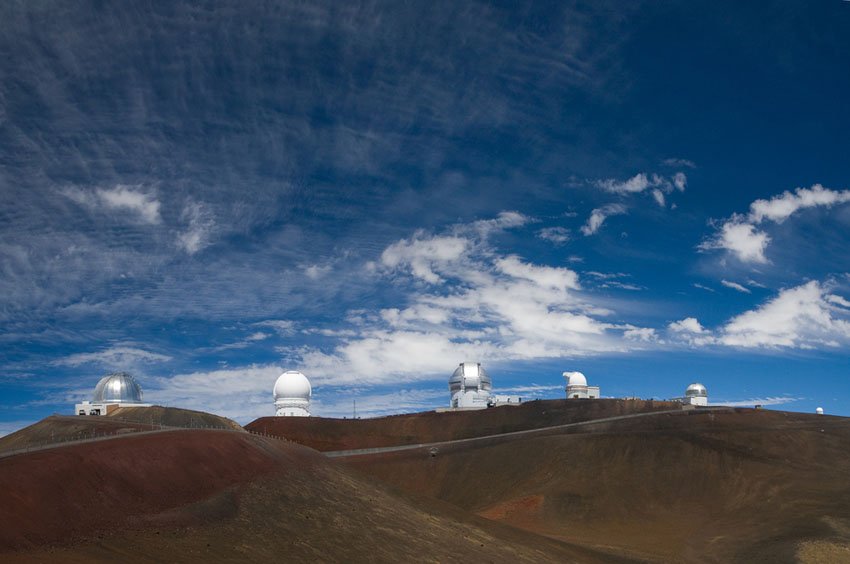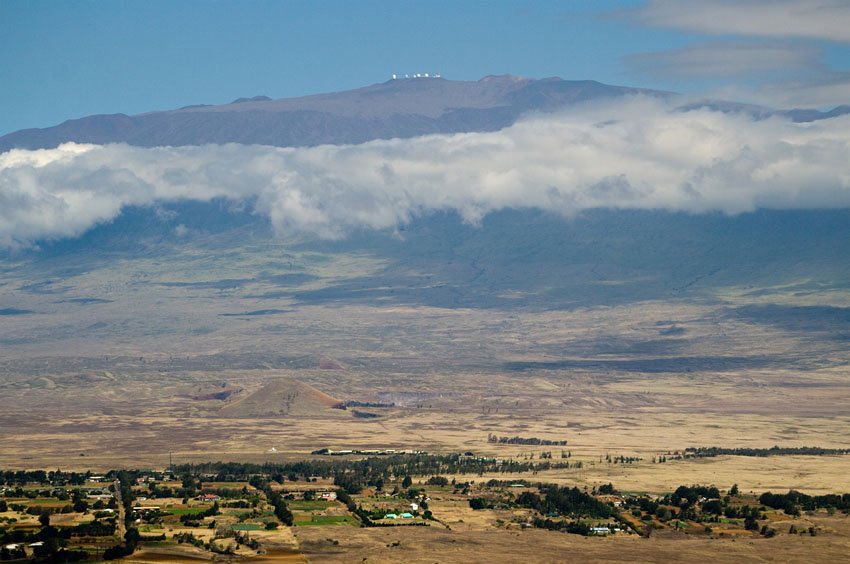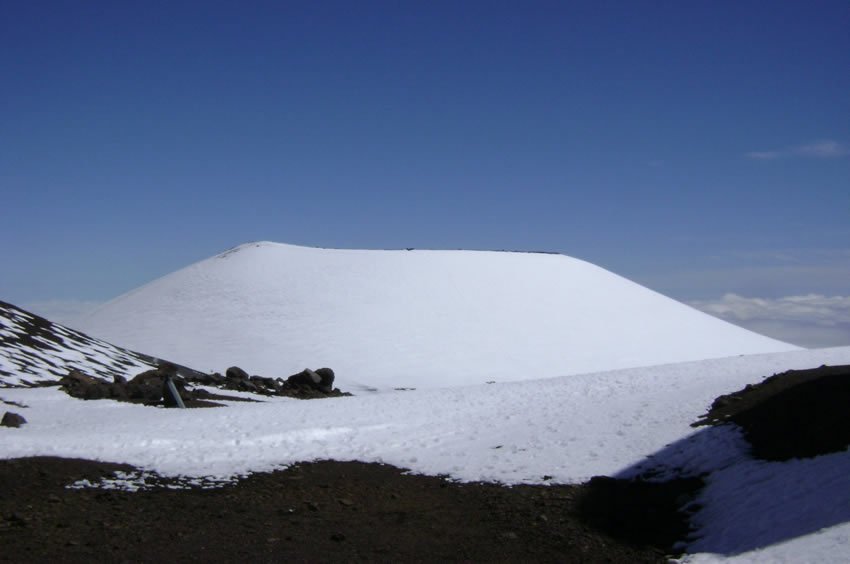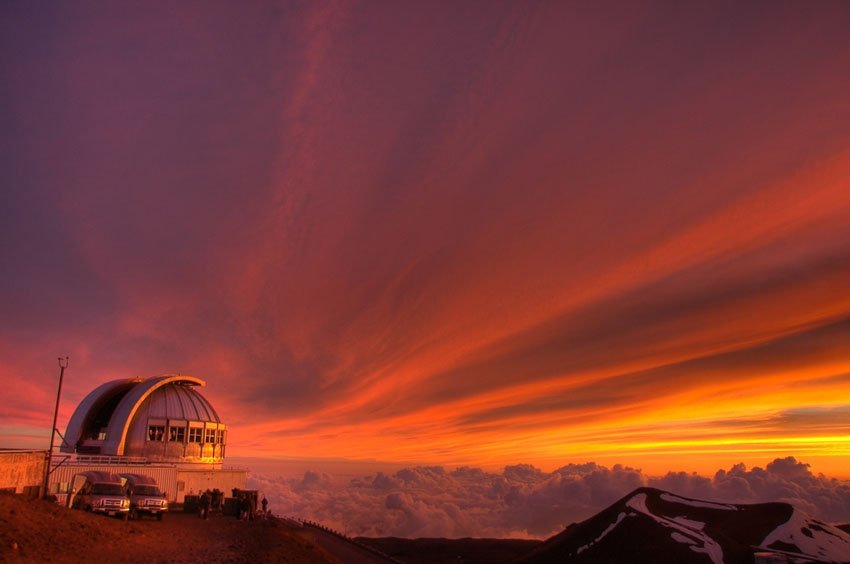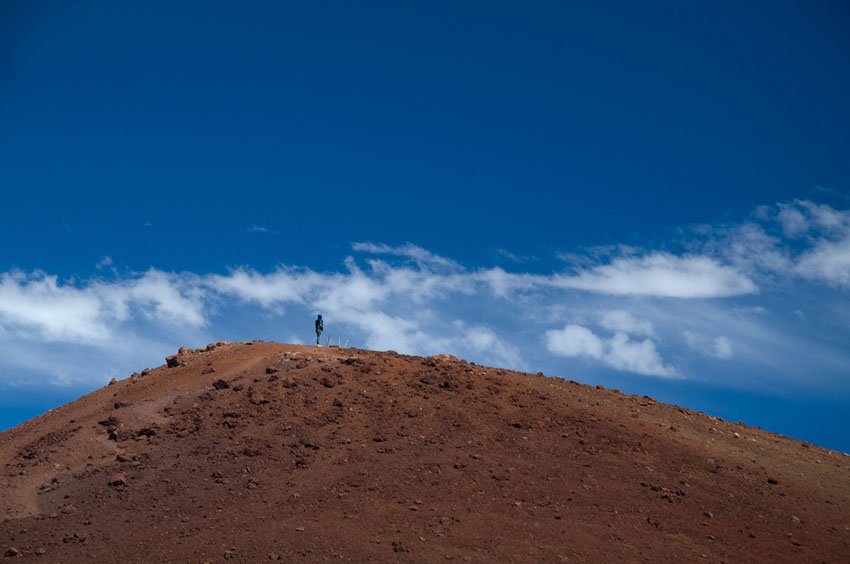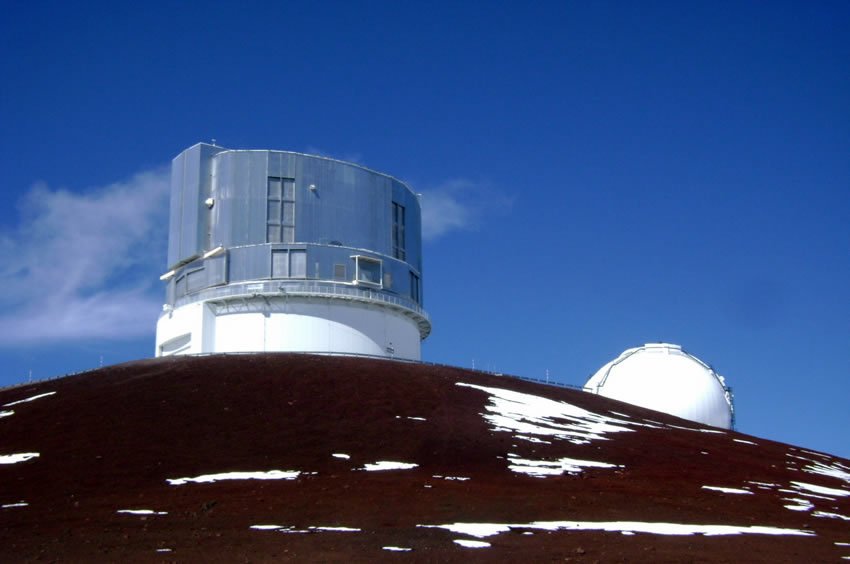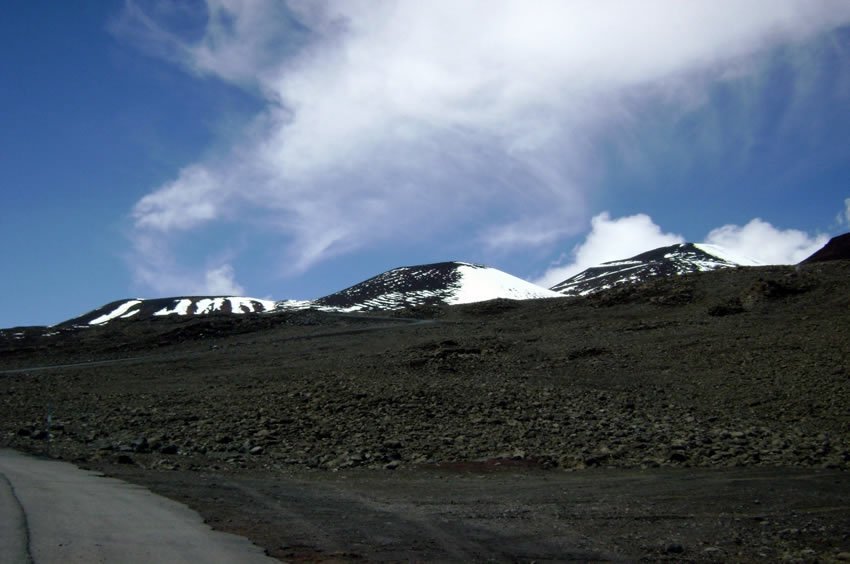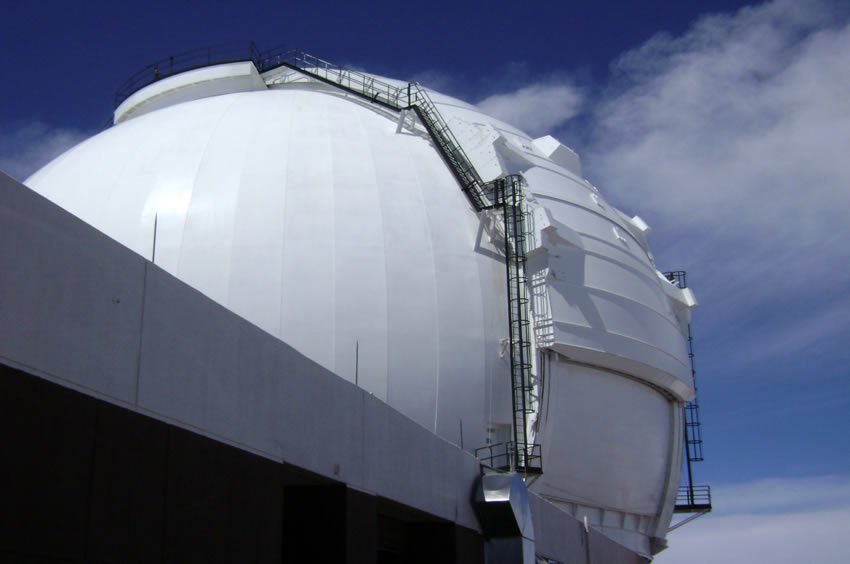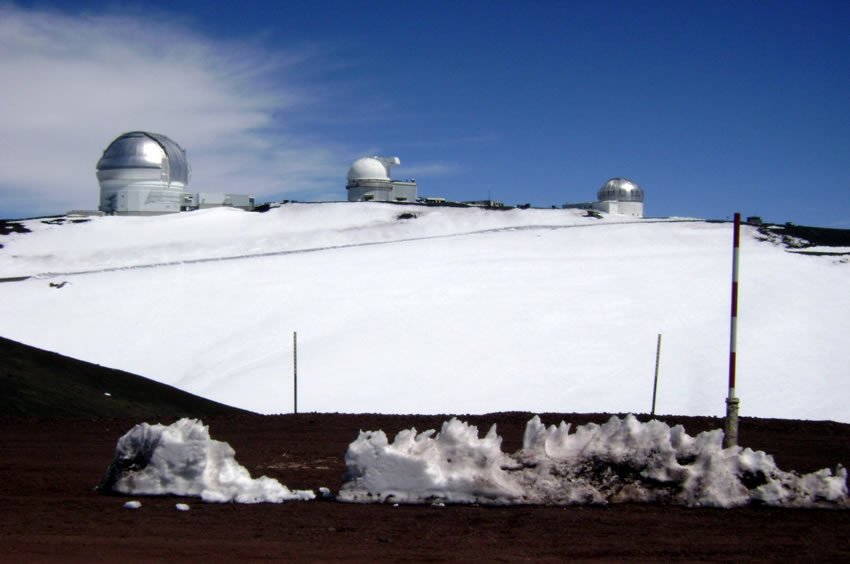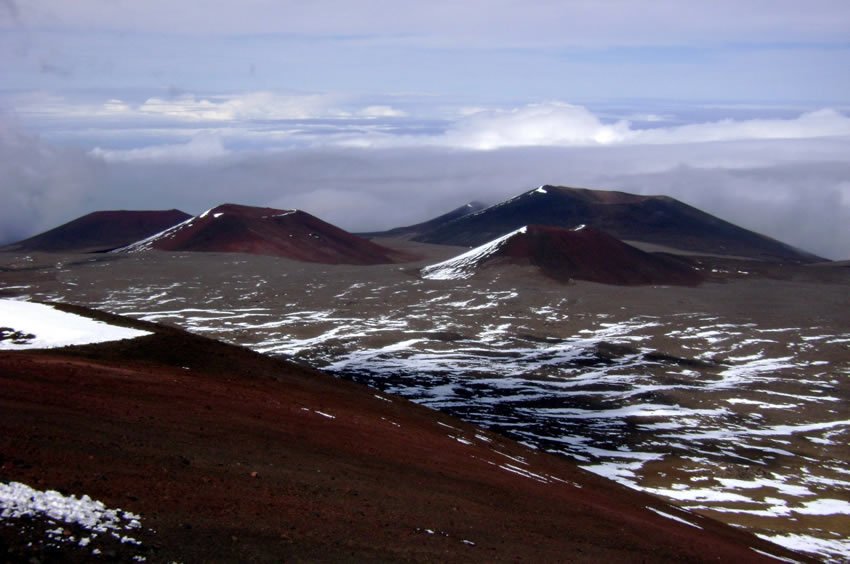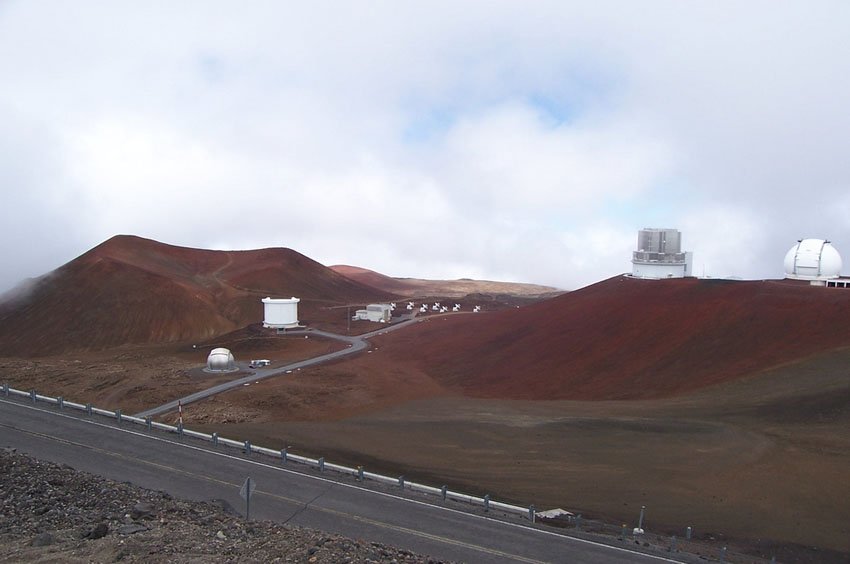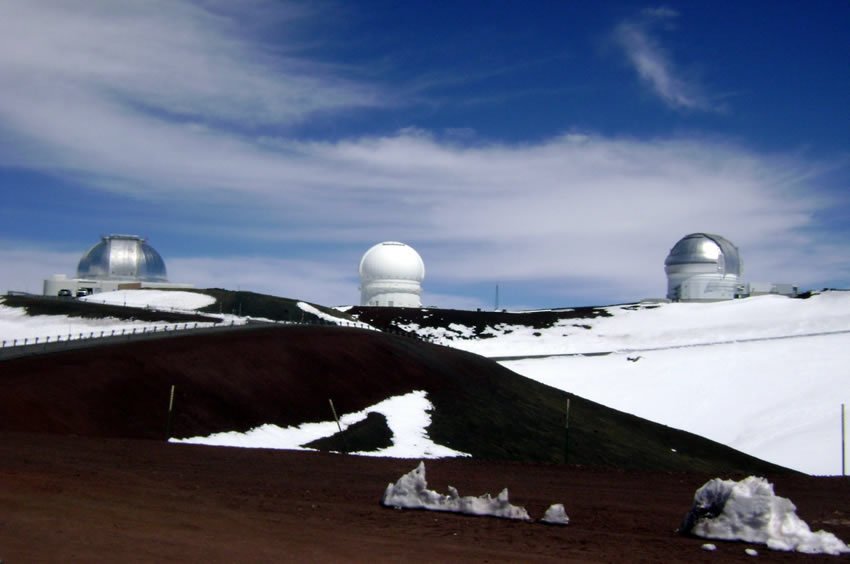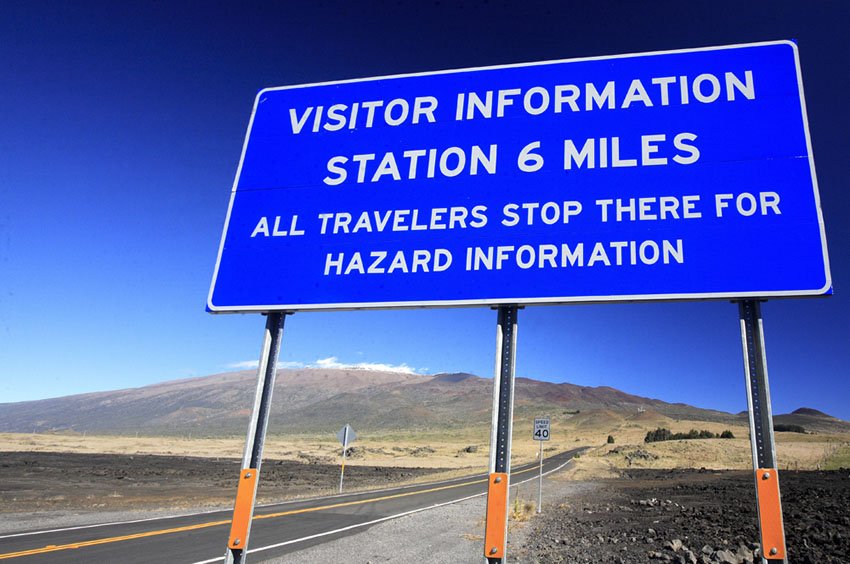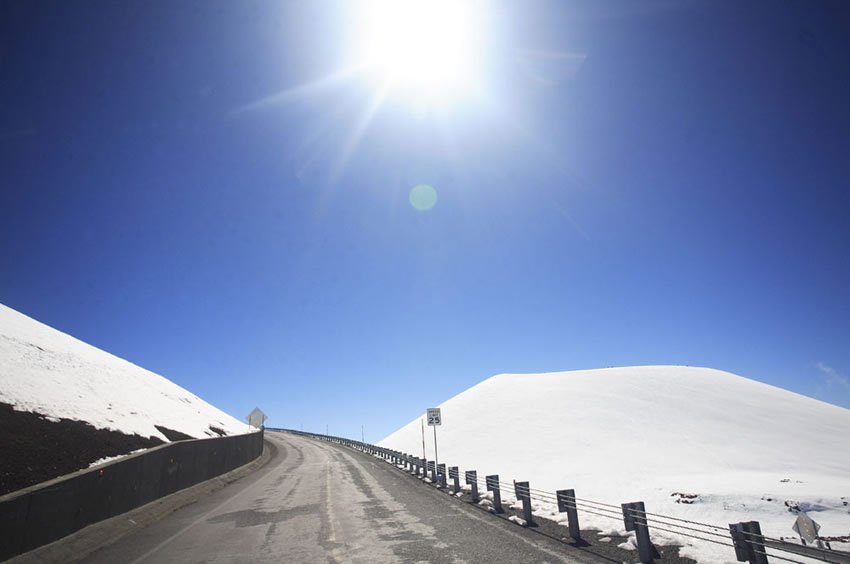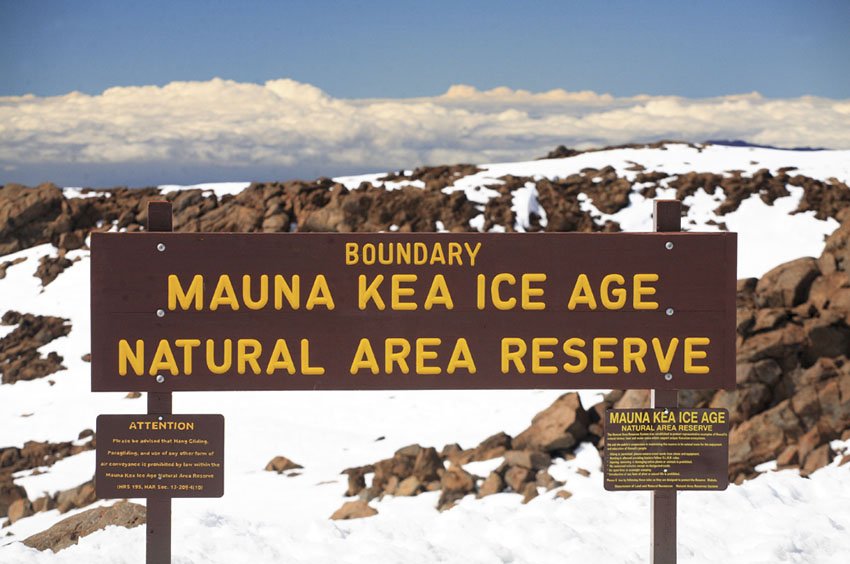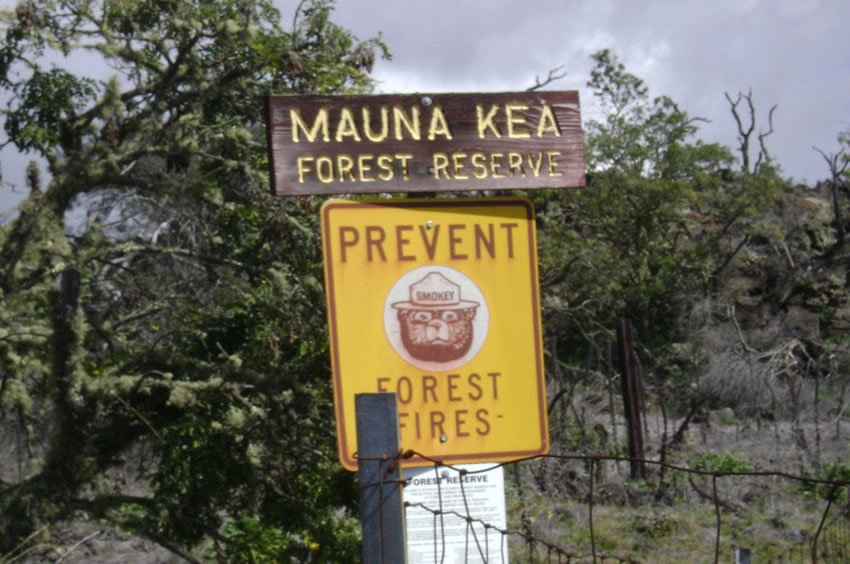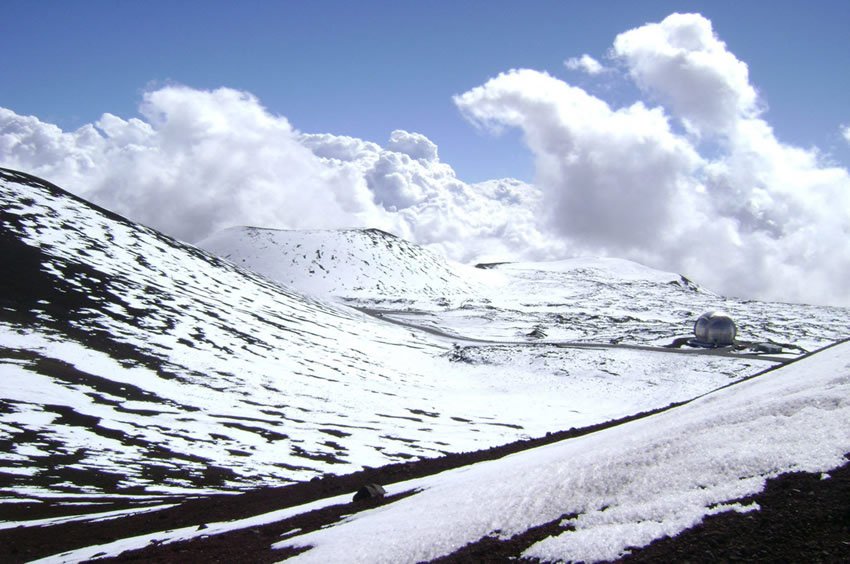Mauna Kea Observatories and Summit
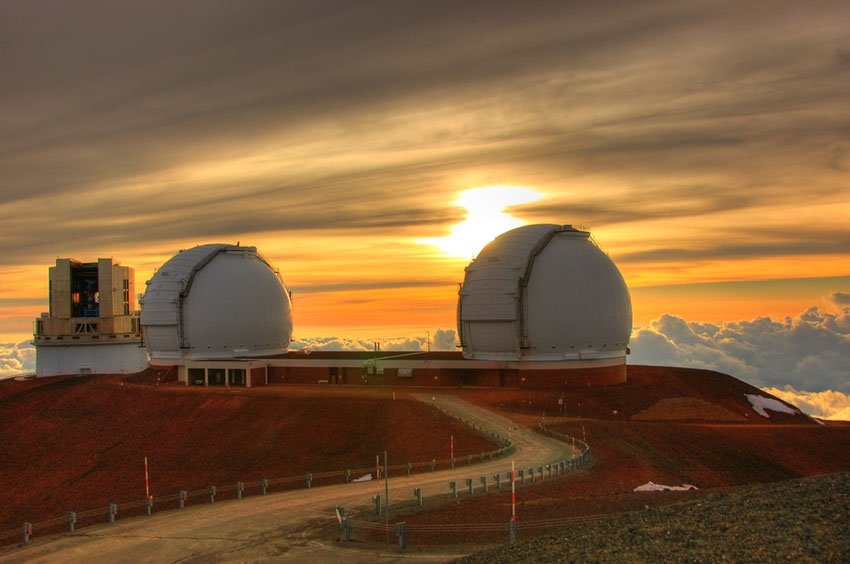
Mauna Kea Observatories and Summit, Big Island
Rising 13,796 feet (4205 m) into the sky, Mauna Kea is the tallest peak in the Pacific and by some accounts, the tallest in the world when measured from its base, which is 18,000 feet (5486 m) below the sea. The lack of light and dust pollution and the clarity of the air make the summit of Mauna Kea the best location in the world for stargazing. At this altitude, the summit is above 40% of the Earth’s atmosphere and 98% of its water vapor, which guarantees crystal clear, cloudless skies on almost all days of the year. Only the Andes Mountains of South America match Mauna Kea when it comes to cloudless nights, but the air is more turbulent there, which makes stargazing more difficult.
A few world-class observatories are located at the Mauna Kea summit, and scientists from around the world book months in advance for a chance to look through these phenomenal telescopes, which are the best state-of-the-art optical, infrared and millimeter telescopes on Earth. The telescopes are administered by different countries. The Smithsonian Submillimeter Array is run by Taiwan and the United States, the James Clerk Maxwell Telescope is administered by the UK, Netherlands and Canada, the Gemini Northern 8m Telescope is used by a consortium of seven nations, and the Subaru Telescope is run by Japan. The Subaru is the most expensive in the collection. It cost $300 million and also features the largest optical mirror in the world, measuring 27 feet (8.2 m) in diameter and weighing 22 tons.
The first telescope to be built on Mauna Kea was the University of Hawaii 0.6m Telescope, which is used mainly to train students from the university. The WM Keck Observatory houses the world’s largest and most powerful optical-infrared telescope. This telescope made a breakthrough discovery in 1996 when the 390in Keck I discovered the most distant galaxy over observed, which is 14 billion light-years away.
Most of these telescopes are off-limits to the public. Only two of them outside visitors can see from within – the WM Keck Observatory visitor gallery (Mon-Fri from 10 am to 4 pm, free admission) and the University of Hawaii 2.2m Telescope (Mon-Thu from 9:30 am to 3:30 pm, free admission). The former has a display and a viewing area inside the Keck I dome, and visitors can watch a 12-minute video. Also, summit tours which include a visit to the Subaru telescope are being offered up to 15 days a month (naoj.org). For all the tours, you need to provide your own four-wheel drive transportation. Alternatively, there are tour operators (including Hawaii Forest & Trail and Mauna Kea Summit Adventures) that offer tours for those who prefer not to drive themselves.
Many would consider driving up to the summit a once-in-a lifetime experience. Sunsets and moonrises are spectacular up here. Depending on the weather and cloud cover, moonrises can look quite unusual. Occasionally the moon may appear ablaze or misshapen. At sunset, one can see the Mauna Kea shadow, a huge silhouette of the mountain looming over Hilo. From that high up you can enjoy an incredible view with the entire island lying at your feet and can even see neighboring Mauna Loa and the island of Maui in the far distance (on a clear day).
However, this adventure is not for everybody. First of all, the road is steep, unpaved, narrow and rough in places. Beyond the Onizuka Center, no food, water, fuel and restrooms are available. A 4 WD vehicle is necessary to drive to the summit – from Onizuka Center, the 8 miles (13 km) up to the summit are unpaved gravel for the first 5 miles (8 km), and then the last 3 miles (5 km) are paved to reduce dust and to protect the sensitive “eyes” of the telescopes. The drive takes about 25 minutes. The upper road sometimes ices over, so it is recommended to drive slowly and in low gear.
Weather-wise, you can expect anything, from rain, wind, fog and hail, to snow. Children under the age of 16, pregnant women, people with respiratory or cardiopulmonary problems as well as people who are obese or physically weak are discouraged from a summit tour. The oxygen levels are reduced by 40% on the summit (compared to sea level), and altitude sickness can affect anyone. Common symptoms include shortness of breath, dizziness, headaches, weakness, reduced muscle control, heart palpitations, nausea, dehydration and impaired reason. The quicker the ascent and the higher the physical exertion, the greater the risk. If you experience any of these symptoms, your only remedy is to immediately begin descending.
On your way up, it is important to spend at least 30 minutes at the Onizuka Center to acclimatize. Also, if you have been scuba diving within the last 24 hours, you should not go on the summit. Bring plenty of water and dress warmly. Temperatures can be around freezing and it is often times windy. The high altitude even affects the scientists who work on the summit. They must come down every four days because the thin air up there makes them forgetful and prone to making calculation errors.
On the way to the summit, there are a few sights worth exploring. Right before the gravel road turns paved (about 4.5 miles beyond the Onizuka Center), look toward the east to see "moon valley." Here, the Apollo astronauts test-drove their rover before their odyssey to the moon. A little further up, right after mile marker 6, there is a parking area. From here, a trailhead leads to Lake Waiau, the third-highest lake in the United States, located at an elevation of 13,023 feet (3,969 m). It is shallow and less than two acres in size, but it never dries up or decreases in size even though it hardly ever rains here and the air is very dry. The reason is because it is fed by permafrost that lies 4 feet (1.2 m) below its surface. Native Hawaiians consider the lake sacred. For them, it is the piko (umbilical cord) that connects earth and heaven. To make sure their baby gets the strength of the mountain, they place a piece of the umbilical cord in the lake, even today.
Opposite of the University of Hawaii 2.2m Telescope, there is a trail leading to the true summit of Mauna Kea, Pu'u Wekiu (Hawaii's highest peak). It is a short, 200-yard (183 m) trail, but it is harder than it appears because of the high altitude and freezing cold winds.
Astronomic viewing is taken seriously on the Big Island and everything is done to reduce disturbances for the scientists on the summit. That’s why vehicle headlights are not allowed between sunset and sunrise because they interfere with astronomical viewing. Also, many Big Island streetlights are orange and pink with low-impact sodium tubes, which send fewer light rays into the night sky compared to ordinary city lights.
For Native Hawaiians, the entire summit area of Mauna Kea is very sacred and they don’t like to see it developed. The name Mauna Kea means "white mountain" in Hawaiian, a reference to the seasonal snowcap on its peaks. Mauna Kea is also called Mauna O Wakea, “wakea” meaning “Sky Father.” Long ago, Wakea and Papahanaumoku (Earth Mother) met on the mountain and made the ali'i (royalty) and the kahuna (priests) and so became the ancestors of all na kanaka maoli (the Native Hawaiians). They made the islands too and everything else. Because the area is sacred for Native Hawaiians and there are many heiaus (temple sites) and burial sites in the area, they don’t like to see so many telescopes (“golf balls”) dotting the summit and are opposed to future developments.
The area around the Mauna Kea summit is also called the Mauna Kea Ice Age Natural Area Reserve. In the past, the summit of Mauna Kea was glaciated and covered by a 500-foot (152 m) ice sheet. A natural phenomenon has been observed at the many cinder cones at the top of the mountain. Just 10 feet (3 m) below the surface is permafrost dating back 10,000 years. If you drill 10-20-foot (3-6 m) holes into the cones and put a pipe in during the daytime, air is sucked into the pipe. Interestingly, a few hours later, at night, warm air will come out of the pipe with enough force to keep a hat floating in the air.
Mauna Kea Observatories and Summit Overview
- Tallest mountain in the Pacific and when measured from its base below the ocean's surface, the tallest in the world
- Best stargazing in the world - many state-of-the-art telescopes are located on the summit, Maunka Kea stargazing tours are offered.
- Scientists from around the world live, work and visit here
- No public viewing through the telescopes, but a few of them can be entered
- 4 wheel-drive vehicle is necessary to get to the summit (alternatively, visitors can join a guided tour group)












